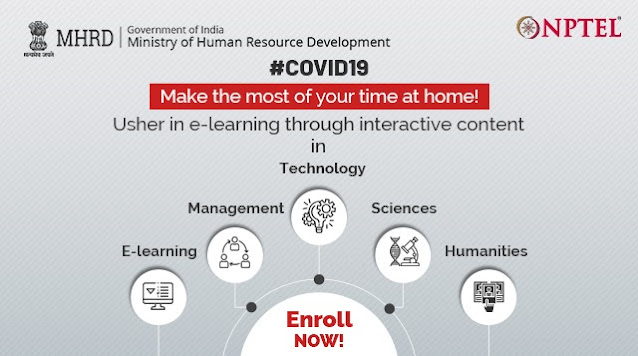YOU CAN MAKE A HUGE DIFFERENCE TO THE INDIAN ECONOMY BY FOLLOWING FEW SIMPLE STEPS:-
Here's a small example:-
In 2012 1 $ = IND Rs 52
Now 1 $ = IND Rs 66
Do you think US Economy is booming? No, but Indian Economy is Going Down.
Our economy is in your hands....
INDIAN economy is in a crisis. Our country like many other ASIAN countries, is undergoing a severe economic crunch. Many INDIAN industries are closing down. The INDIAN economy is in a crisis and if we do not take proper steps to control those, we will be in a critical situation.
More than 30,000 crore rupees of foreign exchange are being siphoned out of our country on products such as cosmetics, snacks, tea, beverages, etc... which are grown, produced and consumed here.
A cold drink that costs only 70 / 80 paisa to produce, is sold for Rs.9 and a major chunk of profits from these are sent abroad. This is a serious drain on INDIAN economy.
We have nothing against Multinational companies, but to protect our own interests we request everybody to use INDIAN products only at least for the next two years. With the rise in petrol prices, if we do not do this, the Rupee will devalue further and we will end up paying much more for the same products in the near future.
What you can do about it?
1. Buy only products manufactured by WHOLLY INDIAN COMPANIES.
2. ENROLL as many people as possible for this cause.....
Each individual should become a leader for this awareness. This is the only way to save our country from severe economic crisis. You don't need to give-up your lifestyle. You just need to choose an alternate product.
LIST OF PRODUCTS
COLD DRINKS:-
DRINK LEMON JUICE, FRESH FRUIT JUICES, CHILLED LASSI (SWEET OR SOUR), BUTTER MILK, COCONUT WATER, JAL JEERA, ENERJEE, and MASALA MILK...
INSTEAD OF COCA COLA, PEPSI, LIMCA, MIRINDA, SPRITE
BATHING SOAP:-
USE CINTHOL & OTHER GODREJ BRANDS, SANTOOR, WIPRO SHIKAKAI, MYSORE SANDAL, MARGO, NEEM, EVITA, MEDIMIX, GANGA , NIRMA BATH & CHANDRIKA
INSTEAD OF LUX, LIFEBUOY, REXONA, LIRIL, DOVE, PEARS, LESANCY, CAMAY, PALMOLIVE
TOOTH PASTE:-
USE NEEM, BABOOL, PROMISE, VICO VAJRADANTI, PRUDENT, DABUR PRODUCTS, MESWAK
INSTEAD OF COLGATE, CLOSE UP, PEPSODENT, CIBACA, FORHANS, MENTADENT.
TOOTH BRUSH: -
USE PRUDENT, AJANTA , PROMISE
INSTEAD OF COLGATE, CLOSE UP, PEPSODENT, FORHANS, ORAL-B
SHAVING CREAM:-
USE GODREJ, EMAMI
INSTEAD OF PALMOLIVE, OLD SPICE, GILLETE
BLADE:-
USE SUPERMAX, TOPAZ, LAZER, ASHOKA
INSTEAD OF SEVEN-O -CLOCK, 365, GILLETTE
TALCUM POWDER:-
USE SANTOOR, GOKUL, CINTHOL, WIPRO BABY POWDER, BOROPLUS
INSTEAD OF PONDS, OLD SPICE, JOHNSON'S BABY POWDER, SHOWER TO SHOWER
MILK POWDER:-
USE INDIANA, AMUL, AMULYA
INSTEAD OF ANIKSPRAY, MILKANA, EVERYDAY MILK, MILKMAID.
SHAMPOO:-
USE LAKME, NIRMA, VELVETTE
INSTEAD OF HALO, ALL CLEAR, NYLE, SUNSILK, HEAD AND SHOULDERS, PANTENE
MOBILE CONNECTIONS:-
USE BSNL, AIRTEL
INSTEAD OF HUTCH
Food Items:-
Eat Tandoori chicken, Vada Pav, Idli, Dosa, Puri, Uppuma
INSTEAD OF KFC, MACDONALD'S, PIZZA HUT, A&W
Every INDIAN product you buy makes a big difference. It saves INDIA. Let us take a firm decision today.
BUY INDIAN TO BE INDIAN - We are not against of foreign products.
WE ARE NOT ANTI-MULTINATIONAL. WE ARE TRYING TO SAVE OUR NATION. EVERY DAY IS A STRUGGLE FOR A REAL FREEDOM. WE ACHIEVED OUR INDEPENDENCE AFTER LOSING MANY LIVES.
THEY DIED PAINFULLY TO ENSURE THAT WE LIVE PEACEFULLY. THE CURRENT TREND IS VERY THREATENING.
MULTINATIONALS CALL IT GLOBALIZATION OF INDIAN ECONOMY. FOR INDIANS LIKE YOU AND ME, IT IS RE-COLONIZATION OF INDIA. THE COLONIST'S LEFT INDIA THEN. BUT THIS TIME, THEY WILL MAKE SURE THEY DON'T MAKE ANY MISTAKES.
WHO WOULD LIKE TO LET A "GOOSE THAT LAYS GOLDEN EGGS" SLIP AWAY?
PLEASE REMEMBER: POLITICAL FREEDOM IS USELESS WITHOUT ECONOMIC INDEPENDENCE
RUSSIA, S.KOREA, MEXICO - THE LIST IS VERY LONG!! LET US LEARN FROM THEIR EXPERIENCE AND FROM OUR HISTORY. LET US DO THE DUTY OF EVERY TRUE INDIAN.
FINALLY, IT'S OBVIOUS THAT YOU CAN'T GIVE UP ALL OF THE ITEMS MENTIONED ABOVE. SO GIVE UP AT LEAST ONE ITEM FOR THE SAKE OF OUR COUNTRY!
We would be sending useless forwards to our friends daily. Instead, please forward this note to all your friends to create awareness...!!
"LITTLE DROPS MAKE A GREAT OCEAN."








